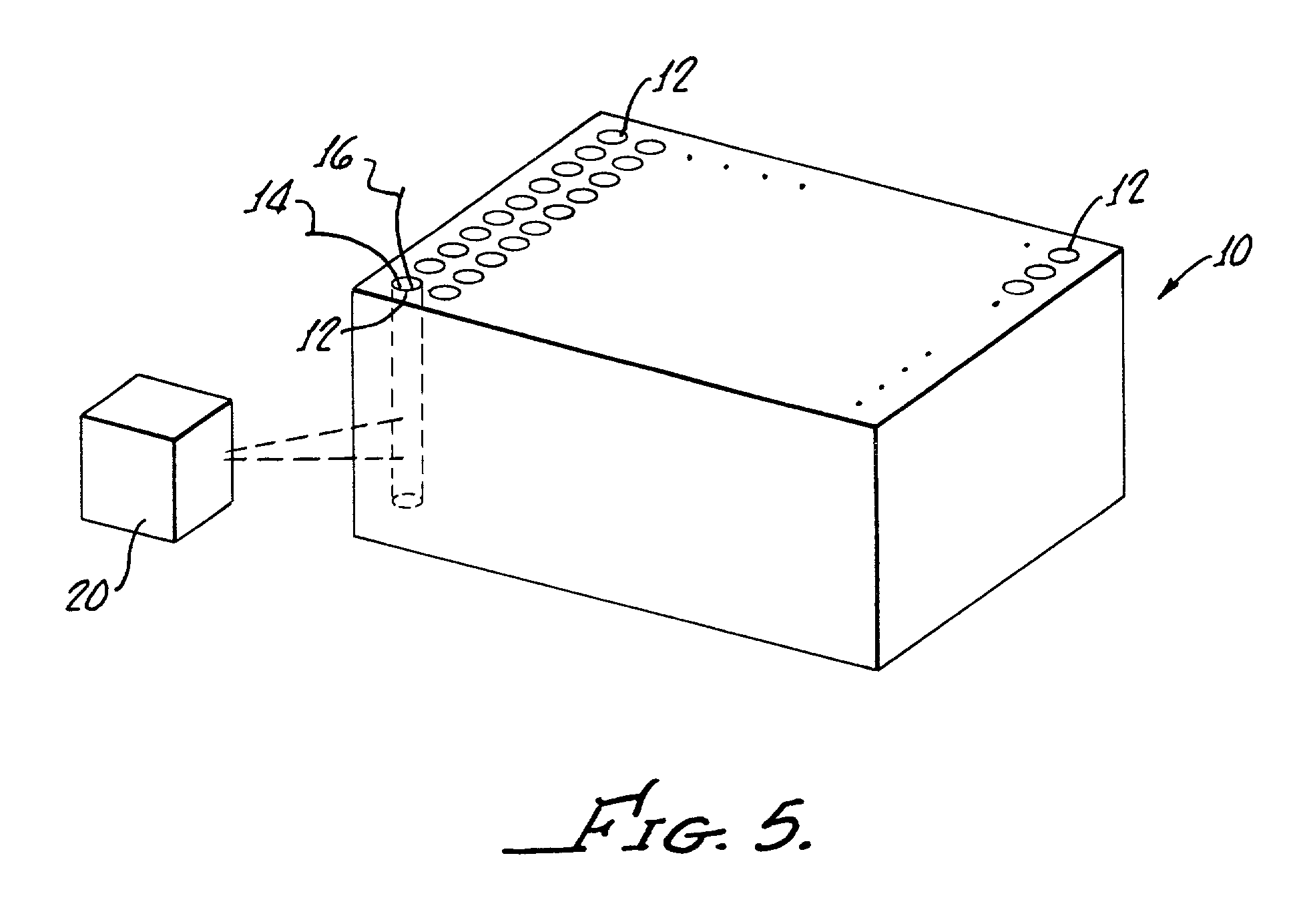High-throughput screen for identifying channel blockers that selectively distinguish transient from persistent sodium channels
a technology of channel blocker and high-throughput screen, which is applied in resistance/reactance/impedence, material analysis, peptide/protein ingredients, etc., can solve the problems of sodium channel depolarization not only opening, but also closing, and serious cellular and organ function compromising
- Summary
- Abstract
- Description
- Claims
- Application Information
AI Technical Summary
Problems solved by technology
Method used
Image
Examples
Embodiment Construction
[0017]The present invention uses a genetically engineered cell containing appropriate subtype of Na+ channel, i.e., one that demonstrates both a transient and persistent current. Such a cell can be engineered by incorporating a cDNA for a Na+ channel with the appropriate biophysical properties into cell type that does not normally contain channels of this type. The cDNAs for several families of Na+ channels have been cloned and sequenced (for reviews see Goldin, 1999; Catterall, 2000). These cDNAs may be introduced into cell lines by well known molecular biological methods (Sambrook and Russell, 2000). In addition, cell lines that endogenously express Na+ channels with the appropriate properties can be used and are included in the present invention. The cell may also contain a potassium (K) channel and a Na / K ATPase (Na+ pump). A 96–386 well plate assay system 10 may be used in conjunction an optical system 20 using well known methods to measure membrane potential (see FIG. 5). Fluo...
PUM
| Property | Measurement | Unit |
|---|---|---|
| Time | aaaaa | aaaaa |
| Membrane potential | aaaaa | aaaaa |
| Membrane potential | aaaaa | aaaaa |
Abstract
Description
Claims
Application Information
 Login to View More
Login to View More - R&D
- Intellectual Property
- Life Sciences
- Materials
- Tech Scout
- Unparalleled Data Quality
- Higher Quality Content
- 60% Fewer Hallucinations
Browse by: Latest US Patents, China's latest patents, Technical Efficacy Thesaurus, Application Domain, Technology Topic, Popular Technical Reports.
© 2025 PatSnap. All rights reserved.Legal|Privacy policy|Modern Slavery Act Transparency Statement|Sitemap|About US| Contact US: help@patsnap.com



